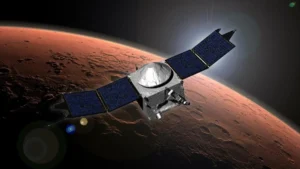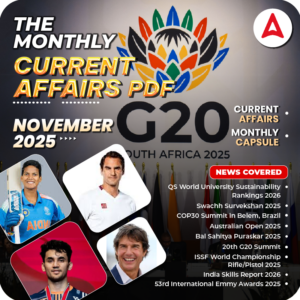Recent scientific findings have revealed that the Magnetic North Pole is shifting at an accelerated pace, moving closer to Siberia and continuing its drift toward Russia. This phenomenon, tracked using the World Magnetic Model (WMM), highlights the dynamic nature of Earth’s geomagnetic field. The shift has significant implications for navigation systems, animal migration, and global communication networks. This article delves into the science behind Earth’s magnetic poles, the causes of the pole’s movement, and its broader implications.
About Earth’s Magnetic Poles
Dynamic Features of Earth’s Geomagnetic Field
Earth’s magnetic poles are not fixed; they are dynamic features generated by the movement of molten iron and nickel in the planet’s outer core. These poles represent the points on Earth’s surface where the planet’s magnetic field points vertically downward. Unlike the geographic North Pole, which remains fixed, the magnetic poles are in constant motion due to changes in Earth’s core.
Discovery of the Magnetic North Pole
The Magnetic North Pole was first located in 1831 by explorer James Clark Ross. At that time, it was situated near Canada’s Arctic islands. Since then, the pole has been continuously monitored, revealing a gradual but significant shift over the past century.
The Shift of the Magnetic North Pole
Historical Movement
Over the past 100 years, the Magnetic North Pole has moved more than 400 kilometers from Canada toward Russia. This movement is not linear or predictable, as it is influenced by complex processes occurring deep within Earth’s core.
Tracking the Shift: The World Magnetic Model (WMM)
The World Magnetic Model (WMM) is a critical tool used to track the position of the magnetic poles. Updated every five years, the WMM ensures the accuracy of navigation systems, including those used in aviation, maritime operations, and military applications. The latest update reveals that the Magnetic North Pole is now closer to Siberia than it was five years ago and continues to drift toward Russia.
Causes of the Pole’s Shift
Core Fluid Dynamics
The primary driver of the pole’s movement is the turbulent flow of molten iron and nickel in Earth’s outer core. This flow, driven by heat escaping from the planet’s inner core, generates Earth’s magnetic field. Changes in the flow patterns can cause the magnetic poles to shift.
Geomagnetic Anomalies
Variations in Earth’s magnetic field, such as the South Atlantic Anomaly, also contribute to the pole’s movement. This anomaly, characterized by a weakening of the magnetic field, suggests instability in the geomagnetic field, which may influence the pole’s location.
Earth’s Magnetic Reversal Cycle
While the current shift does not indicate an imminent magnetic reversal, it may signal long-term changes in Earth’s geomagnetic field. Historically, the planet’s magnetic field has undergone reversals approximately every 200,000 to 300,000 years. The last reversal, known as the Brunhes-Matuyama reversal, occurred about 780,000 years ago.
Earth’s Magnetic Field and Magnetosphere
Generation of the Magnetic Field
Earth’s magnetic field is generated by the movement of molten iron and nickel in its outer core. This field extends into space, forming a protective shield known as the magnetosphere.
Role of the Magnetosphere
The magnetosphere serves as Earth’s first line of defense against solar wind and cosmic radiation. It plays a vital role in protecting the planet by trapping charged particles in the Van Allen Belts, doughnut-shaped zones around Earth. Variations in the solar wind can lead to geomagnetic storms, which can disrupt satellite operations, communication systems, and power grids.
Implications of the Pole’s Shift
Navigation Systems
The accelerated shift of the Magnetic North Pole has significant implications for magnetic navigation systems. These systems, used in aviation, maritime operations, and military applications, rely on precise magnetic models. Frequent updates to the World Magnetic Model (WMM) are necessary to ensure accuracy and safety.
Animal Migration
Many migratory species, including birds and marine animals, rely on Earth’s magnetic field for navigation. Changes in the magnetic field could disrupt their natural migration patterns, potentially affecting ecosystems and biodiversity.
Communication and Satellites
The weakening of Earth’s magnetic field, associated with the pole’s movement, increases the planet’s vulnerability to solar storms. These storms can disrupt communication networks, GPS systems, and power grids, posing challenges for modern technology and infrastructure.
Scientific Research
The shifting pole provides scientists with a unique opportunity to study the geodynamo processes that generate Earth’s magnetic field. By understanding these processes, researchers can better predict long-term changes in the geomagnetic field and their potential impacts.
Do You Know?
Magnetic Reversal (Geomagnetic Reversal)
A magnetic reversal occurs when Earth’s magnetic field reverses polarity, meaning the Magnetic North Pole and Magnetic South Pole switch places. While reversals have occurred approximately every 200,000 to 300,000 years in Earth’s history, the last one, the Brunhes-Matuyama reversal, occurred about 780,000 years ago. Although the current shift does not indicate an imminent reversal, it highlights the dynamic nature of Earth’s magnetic field.
Here is the summary of the news in a tabular format:
Summary of Magnetic North Pole Shift
| Category | Details |
|---|---|
| Why in News? | The Magnetic North Pole is shifting at an accelerated pace, moving closer to Siberia and drifting toward Russia, affecting navigation, wildlife, and communication systems. |
| About Earth’s Magnetic Poles | The magnetic poles are generated by the movement of molten iron and nickel in Earth’s outer core and are constantly shifting, unlike the fixed geographic poles. |
| Discovery | Located in 1831 by James Clark Ross near Canada’s Arctic islands. It has been continuously monitored since then. |
| Historical Movement | The Magnetic North Pole has shifted 400+ km from Canada to Russia over the past 100 years, influenced by Earth’s core dynamics. |
| Tracking System | The World Magnetic Model (WMM) is used to track the pole’s movement and is updated every five years for accurate navigation. |
| Causes of the Shift | – Core Fluid Dynamics: Molten iron & nickel movement in the outer core. – Geomagnetic Anomalies: Variations like the South Atlantic Anomaly affect the field. – Magnetic Reversal Cycle: Historical reversals occur every 200,000–300,000 years; the last was 780,000 years ago. |
| Earth’s Magnetic Field & Magnetosphere | – The magnetic field is generated in the outer core. – The magnetosphere protects Earth from solar winds and cosmic radiation. – Variations in solar activity can cause geomagnetic storms affecting satellites and power grids. |
| Implications of the Shift | – Navigation Systems: Aviation, maritime, and military operations need frequent updates to the WMM. – Animal Migration: Birds & marine animals relying on magnetic navigation may face disruptions. – Communication & Satellites: Increased vulnerability to solar storms affecting GPS and power grids. – Scientific Research: Helps study geodynamo processes for better predictions of geomagnetic changes. |
| Magnetic Reversal (Fact) | A magnetic reversal happens when the North and South Poles switch places. Though the current shift doesn’t indicate an imminent reversal, it highlights Earth’s dynamic geomagnetic nature. |



 NASA Loses Contact with MAVEN Spacecraft...
NASA Loses Contact with MAVEN Spacecraft...
 US FDA Qualifies First AI Tool to Accele...
US FDA Qualifies First AI Tool to Accele...
 11th India International Science Festiva...
11th India International Science Festiva...







